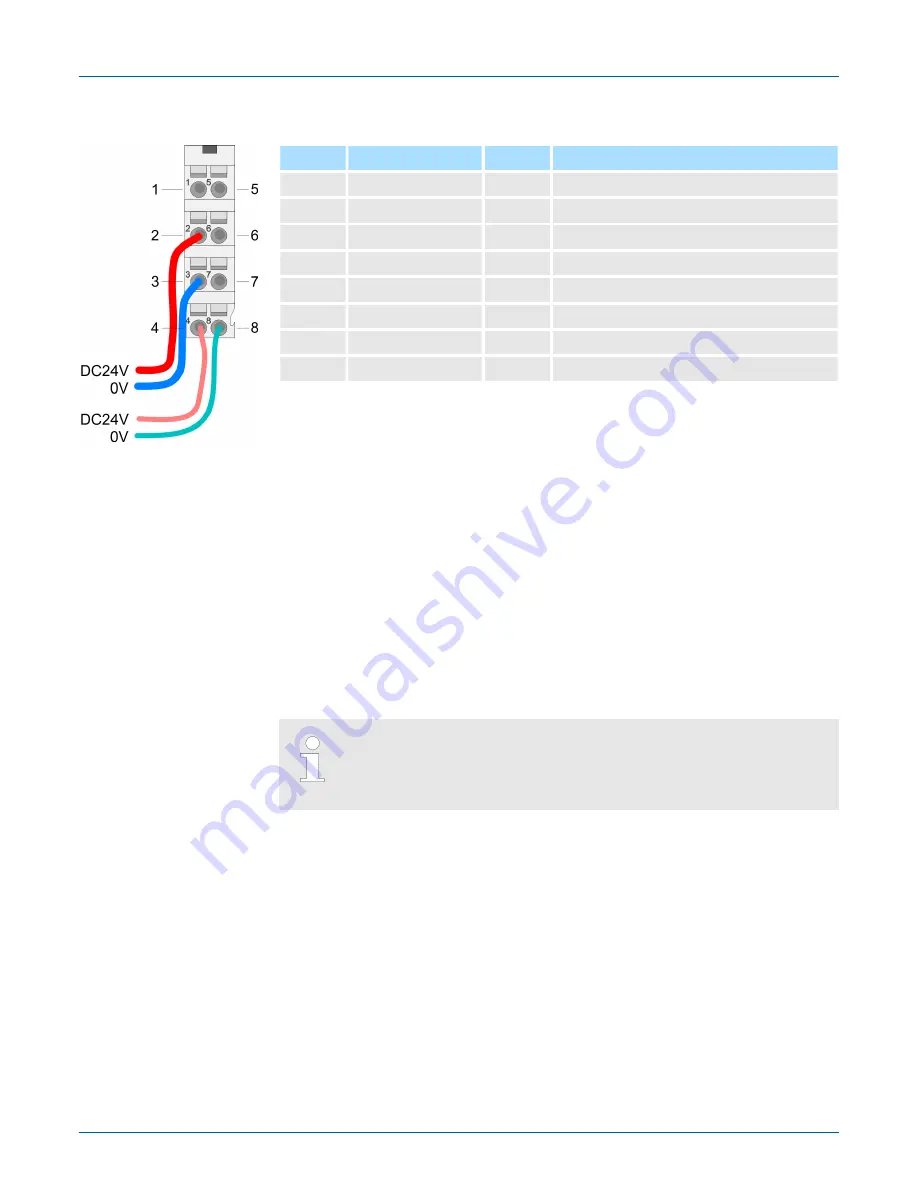
For wires with a core cross-section of 0.08mm
2
up to 1.5mm
2
.
Pos.
Function
Type
Description
1
---
---
not connected
2
DC 24V
I
DC 24V for power section supply
3
0V
I
GND for power section supply
4
Sys DC 24V
I
DC 24V for electronic section supply
5
---
---
not connected
6
DC 24V
I
DC 24V for power section supply
7
0V
I
GND for power section supply
8
Sys 0V
I
GND for electronic section supply
I: Input
8pin RJ45 jacks:
n
An EtherCAT network always consists of a master and an various number of
EtherCAT salves (coupler).
n
Each EtherCAT slave has an "IN" and "OUT" RJ45 jack. The arriving EtherCAT cable
from the direction of the master is to be connected to the "IN" (Port 0) jack. The
"OUT" (Port 1) jack is to be connected to the succeeding EtherCAT station. With the
respective last EtherCAT station the "OUT" jack remains free.
n
EtherCAT uses Ethernet as transfer medium. Standard CAT5 cables are used. Here
distances of about 100m between 2 stations are possible.
n
Only EtherCAT components may be used in an EtherCAT network. For topologies,
which depart from the line structure, the corresponding EtherCAT components are
necessary.
n
Hubs may not be used.
Possible telegram loss during network interruption
Currently, the EtherCAT slave requires longer (about 1s) to detect that a
pulled EtherCAT cable is reconnected. As a result, a slave in the network
continues its transmission process too early and the telegrams are lost.
PM - Power module
Interface for EtherCAT
communication
VIPA System SLIO
Hardware description
Structure > Interfaces
HB300 | IM | 053-1EC01 | en | 18-49
38
















































